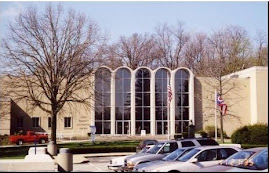Previously the collection was stored chronologically, with most of the pieces randomly grouped in muslin bags. By "randomly" I mean there was a mix of things in each bag, although they were all from the same era -- a dress, a suit, a coat, a blouse, etc.
Each bag did have a label to list what was inside, but nothing about those bags was standard. Some opened from the top, some from the bottom (both made it difficult to safely remove what was inside). Some had labels on the left side of the bag, some on the right side. The labels were sometimes in clear pockets, sometimes in muslin pockets (which camouflaged them quite nicely!).
In short, the bags were a PAIN. I have been waiting for the day when I could take everything out of them so I could see at a glance what we have!
The first step was to take everything out. Not an easy task! As I mentioned before, the bags were all different, and some were knotted closed like Fort Knox. Next, I separated outerwear (capes, coats, jackets, and furs) to store them separately. Then I took each hanger off the old rack and moved it to the new units. Since they were already arranged chronologically, that part was easy.
To maximize our space, I categorized the items within a decade by type. All of the dresses are together, which require a high bar. All the suits are together, which require a short bar. In the future, we can add a second bar to accommodate our growing textile collection.
I even went further than that and sorted the dresses by color! Darks, lights, patterns. It felt a bit like sorting laundry.
The end result is a perfectly organized hanging textile collection that is accessible for exhibitions, new donations, and research!
Here are some photos of what the collection looks like now:
 |
| Part of our outerwear collection |
 |
| 1980s |
 |
| Military and civil uniforms |
 |
| Nursing and Red Cross uniforms |
 |
| Dusters -- these are lightweight coats, usually made of linen, that both men and women wore when riding in an open automobile in the 1910s and 1920s to keep the dust off of them -- hence the name! |
 |
| 1960s |
 |
| 1960s-1970s |
 |
| 1940s-1940s |
 |
| 1920s-1930s |
 |
| pre-1900, 1900s, 1910s |
Phase II will be to move the boxed textiles to the new shelving units. We store anything that cannot be safely hung on a hanger flat in an acid-free box. There are fewer hanging things and more boxed things in the early decades, then it reverses as you come forward in time. Besides wedding dresses, almost nothing from the post-1950s era is stored flat. But almost everything we have from pre-1900 is flat!
This morning Steve, my volunteer Kathy, and I moved everything out of the Fire Station storage area into the new building. This afternoon I'm going to start sorting and stacking things in the new shelves.
It's hard work to move all of this stuff around, but it is going to be fabulous when we're all done!!!




1 comment:
This is very impressive! Congratulations on achieving such high quality conservation of these textiles.
Post a Comment